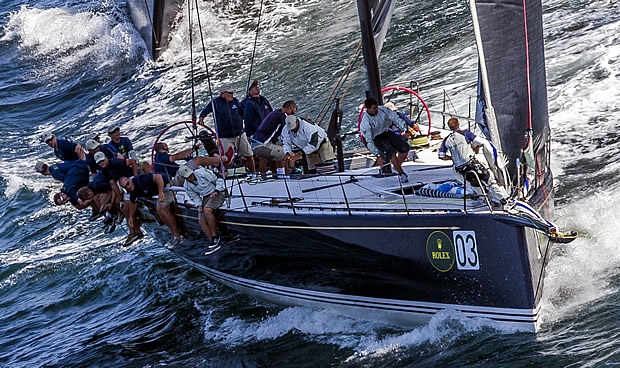
Bella Mente version 2
One of the most committed owners to the Mini Maxi class is certainly Minneapolis-based financier Hap Fauth, who’s second Bella Mente Mini Maxi was launched in May. The boat has since competed in the Newport-Bermuda Race before being shipped to Europe where last week she became the new Mini Maxi World Champion.
Possibly because of the mistakes made with the first Bella Mente Mini Maxi - that had to have major surgery carried out on it to rectify the massive lee helm she developed whenever the chine dug in - the new boat has been long in gestation. Work commenced on this project all the way back in November 2010...
In general terms the new Bella Mente’s remit is to be capable of racing both inshore and offshore. As owner Hap Fauth describes it: “We try to set the boat up for both inshore and offshore and built this boat so that we would feel very comfortable in a Sydney Hobart or a Fastnet in terms of the boat’s integrity. Nothing is ever perfect in terms of building a screamer for offshore or something that is lightning fast around the buoys, but we think we are kind of in the middle and if we sail it well, we’ll do okay.”
Given that there are now four racing Mini Maxis competing at the 72ft maximum length and future boats are also likely to be of this size, there is the potential for fantastic competition racing against boats with similar ratings, as we saw the beginnings of last week in Porto Cervo.
While both the new Judel Vrolijk Mini Maxis, Stig and Bella Mente, are developments of Niklas Zennström’s highly successful Rán 2, in turn a progression on from Dan Meyers’ 66ft Numbers, with Bella Mente the Judel Vrolijk office was commissioned to carry out a considerable amount of additional research before Fauth pressed the button on the build.
Designing an IRC race boat is an unusual challenge as it is supposedly a ‘secret rule’ but any designer worth his salt will have a very clear picture of what IRC penalises and what it doesn’t. As Rolf Vrolijk says: “You are always trying to figure out the areas which it doesn’t really look at performance-wise because it is a very simple approach and it can’t cover all the areas – like beam ratios and stability, it is just not possible in a simple rule to catch that and that is the area where you try to work on. And the other area, as always, is where do you get more performance and effective length out of the concept? That is in bow shapes and stern shapes.”
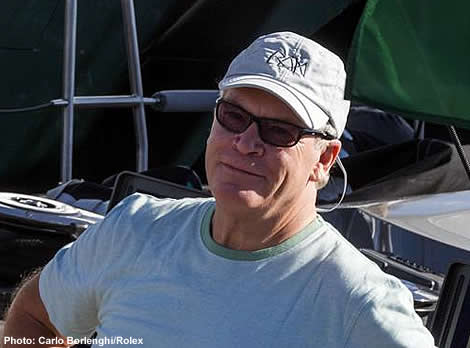
Vrolijk adds that designing a competitive IRC boat is also about getting it to surf earlier, having the ability to plane and adequate sail area to accelerate, so that she can outperform her rating. “IRC is a one number rating so it means that you have a point, that might be 11 knots, so it is a matter of balancing the curves of performance around that one point and if that works well – you aren’t changing the numbers [the TCC] really. You lose performance here and gain it there, but in the middle the boat doesn’t change.”
Judel-Vrolijk’s last 72ft Mini Maxi design, Rán 2 was conceived prior to the International Maxi Association lowering the maximum size of Mini Maxis from 80 to 72ft. So Bella Mente and Stig are the first Mini Maxis designed specifically to this maximum length. With this limit in place, so with the new boats the designers attempted to gain waterline length when heeled by increasing volume in the ends.
Vrolijk says that both Hap Fauth and the whole Bella Mente team enjoys the design, R&D and ‘yacht-as-a-science-project’ side and were hands-on with the research work they carried out: “We did quite a lot of studies. We did big size and small size tank testing and different families boats, a little bit like the TPs in that we had a conventional intermediate type, a narrow boat and the type with really wide sterns like the Audi TPs. We tank testing looking at those three and in parallel to that some parameter configurations.”
The Bella Mente team continues to work closely with the Vrolijk office as they develop or remode the boat. For example for the Maxi Worlds they lowered the boat’s IRC TCC at the same time optimising her for a lower wind range. “That is a game they like to play and that Hap [Fauth] supports a lot,” says Vrolijk, adding that Bella Mente in her latest configuratio is now optimised for similar mid-range conditions to Rán 2.
In the end they chose the intermediate type of hull rather than one of the extreme options as Vrolijk says there is so much money at stake in a project like this you don’t want to be wrong (as was the case with the previous Bella Mente). As a result the new boat’s lines are very similar to those of Ran 2. While the two new boats and Ran 2 share the same Beam Max, the new boats are narrower on the waterline at this point, but fuller in the ends with less rocker.
Like all Vrolijk’s recent race boat projects they worked on the engineering with Steve Koopman at SDK Design in Newport, RI, Koopman’s partner being Vrolijk’s former Alinghi design team co-worker Dirk Kramers, now up to his elbows in AC72s at Oracle Team USA. The boat was built in carbon and Kevlar Nomex, over a male mould, at New England Boatworks, where the last Bella Mente was also constructed.
To date the boat has suffered one significant structural issue when the deck rippled during the Bermuda race. This is being blamed on the materials not behaving according to the manufacturer’s specification.
The significant difference between the two new generation Mini Maxis is that while Stig is unashamedly a Mediterranean Mini Maxi, Bella Mente also has to compete offshore. As a result she has less draft and stability than Stig and is generally more optimised for reaching/downwind and for high top speed.
But the most evident difference is that Bella Mente’s rig has more or less in-line spreaders (or less than 5 degrees) whereas on Stig they are swept back.
“With the team and development of our old rig we wanted more control over the bend,” explains Peter Henderson, Bella Mente’s boat captain. “With this you can change the bend any way you want: You have got the butt control, the check controls the main bend and the top mast controls the top of the bend.” They can move the mast step fore and aft by 100mm while they can adjust the rake by 2° on the hydraulics, but have strops of different lengths they can fit to the forestay ram to adjust where in the rake range these 2 degrees fall.
In addition to more control, in-line spreaders also allows a lighter mast section to be used (thereby increasing stability), but they have also required that the rig and in turn the cockpit (and presumably the keel) to be moved further aft in the boat compared to Rán 2 and Stig. This is partly to increase J measurement, thereby enabling bigger headsails to be used as the in-line spreaders of course offer less overlap. But there is also a bigger agenda: “The whole rig is set up further aft so it is like a bigger boat we have cut off,” says Vrolijk. “That has been pushed by the team and by Dee [Smith] also.”
Bella Mente’s sail plan is also slightly different and is higher aspect and less ‘fractional’ than the opposition (in fact the headstay attachs to the mast above where it starts to taper) so for example their fractional kites are typically bigger than the opposition’s, giving the US team a gear the other Mini Maxis don’t have. Compared to Rán 2, Vrolijk says Bella Mente has slightly more stability and slightly less sail area: wetted surface area ratio, although it is fairly marginal.
The suppliers of the rig are something of a mix’n’match. The tube was built by HallSpars in Rhodes (yet another local supplier for the Newport, RI-based team) but the carbon fibre rigging is from Southern – EC6. All the halyards are on locks, although for inshore racing the locks can be removed for the masthead halyards.
Henderson says they after they dropped the rig on the previous Bella Mente they have worked and developed a good relationship with the HallSpar team and so stuck with them for the new boat.
Another reason for the cockpit being further aft was the tendency of the previous Bella Mente to nosedive, although this seems to be very much less of an issue with the new boat. As a result in working on the cockpit layout - a full mock-up was built and the crew were integral to its design – many of its features are designed to keep the crew aft for as much as possible. So they have moved two of their grinders aft of the wheels (albeit still in front of the mainsheet track) and they have gone for a TP52-style pit area, located on the starboard side of the companionway, whereas on the other 72s it is split. This is so that the pit can be run by one crewman, rather than the usual two.
The winch package is from Harken but the layout was designed by John Williams, who also worked on Rán and Stig. In the name of keeping crew weight aft, the aft grinders are capable of powering any function required of them, be it driving a winch, the spinnaker take-down system below deck or the Cariboni rotary pump for the hydraulics (on board Navtec has supplied the rams, Cariboni the valves and they also have a Harken handpump...)
“In the Bermuda race we ran the entire winch system off of the aft pedestals with everyone hiking at the back and only two trims in front of the wheel,” recalls Henderson.
We’ve reported about this set-up previously when we first featured Ran 2, as with this set-up the grinders really do just become horsepower machines, able to drive any function or combination of functions. Design of the hydraulic systems was carried out within the team and with crewman Alex Wadson.
Elsewhere the primaries have been moved inboard, allowing the trimmer a better view of the headsails upwind while the controls for the jib leads are also slightly different to Ran with the rams controlling lateral movement and up/down located under deck.
John Williams was also involved in the design of the spinnaker take down system. Bella Mente is fitted with a giant foredeck hatch with a giant roller fitted on its aft side. Having the pit area located to starboard means that down below the head is on the port side and so to avoid this the take-down line runs down to the starboard side to the transom and directly back up to the drum for the take-down line, which, as is the case on all three of the Judel-Vrolijk 72s is directly beneath the pit winch with transmission that allows the pedestals to grind the main pit winch, the take-down drum or both. On the other boats the take-down line runs aft down the port side, across the transom and forward up the starboard side to the drum.
Compared to say a TP52 where down below is a cats cradle of criss-crossing purchase systems, because there is much greater use of hydraulics, down below on Bella Mente there are almost no ropes to be seen, with an under deck channel leading control lines back from the mast and the tack lines for example running aft in their own tubes. And in fact most items below have mylar covers, including for example the take down drum and its drive mechanism to prevent sails/lines, etc catching on them. Henderson says that offshore it is typically very bumpy on board, so it is all to easy for lines to get fouled hence the cleaner set-up. “The other thing we tried to do with this boat is to keep it pretty modular, so we can take parts on for offshore and take them off for inshore, like the nav station, the galley, etc.,” he adds.
At present they are using rope bags down below for the sheet ends passing through the cockpit side. Henderson says they have sheet end take-up drums but they “don’t feel comfortable using them yet.”
There is a drop down leg for the prop which McConaghy now sell as a semi-off the shelf product, all built of course in carbon fibre. The leg drops down on a worm drive driven from what appears to be a standard winch socket. However Henderson produces a portable power screwdriver with a winch end fitting that they use to speed this us. “We replaced the one on our old boat with one of these and we were so happy with it that we ordered another,” he says of the retractible engine drive shaft arrangement.
Typically Bella Mente sails with 18-21 crew depending on the wind strength although Henderson says they can go down to as few as 16 if it turns really light. Top speed is hard to determine because apparently the speedo stops working at 22 knots but they reckon they were going close to 30 knots in the Bermuda race.
The crew on board is fully pro, with an afterguard including heavyweights such as Dee Smith, John Cutler and Ian Moore with the latest recruit (who sailed on the old Bella Mente in the Transpac race last year) being Mike Sanderson. “I think they are great boats,” says John Cutler, who previously sailed in the Mini Maxi class on the Container STP65. “They scoot along pretty nice and they are powerful and they reward good crew work and they are not excessively complicated to sail. I think they are a really great boat. It would be nice if there were more of them, because it is great racing.”
Henderson and Fauth both like the direction the Mini Maxi class is going particularly with more 72s on the start line and Andres Soriano's new Alegre arriving next season. “It is pretty close. Everyone is within 8-10 seconds max in IRC for an hour’s racing. It is a boat length or two max."
From here Bella Mente joins Shockwave on a ship back to the US East Coast. The intention is to carry out some training with George Sakellaris’ team before taking part in the Key West feeder race and Key West Race Week itself in January. Then the plan is to compete in the RORC Caribbean 600 before shipping the boat back to Europe in time for Palmavela. However in addition to the Med circuit the 2013 program for the boat is to include the Rolex Fastnet Race in August while at the end of the European season the boat will be shipped south to Sydney for the Sydney Hobart in December.
As to the future of the Mini Maxi class, Fauth concludes: “I think it has a great future. There are a number of serious discussions going on about new builds. We’ve bracketed in a 72ft limit so we don’t have to go custom with every piece of hardware on the boat and they are exciting to sail, really fun.”
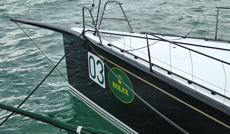 |
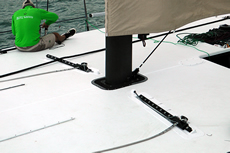 |
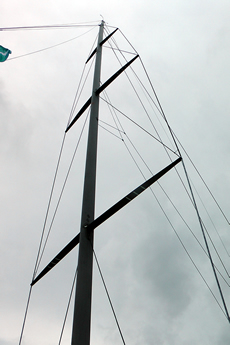 |
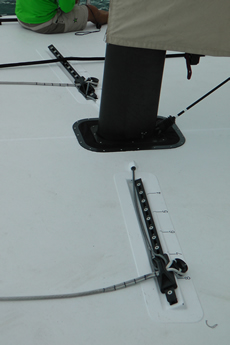 |
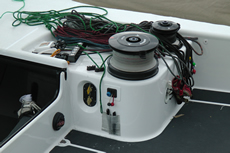 |
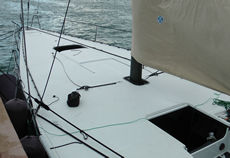 |
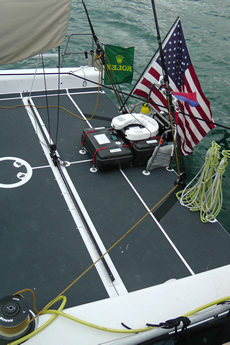 |
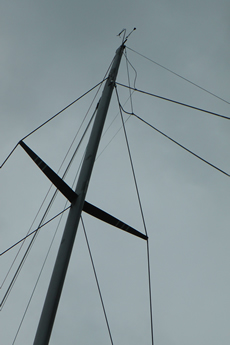 |
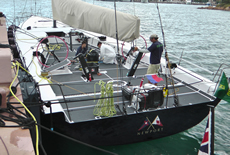 |
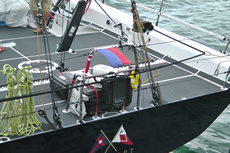 |
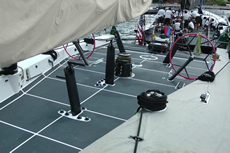 |
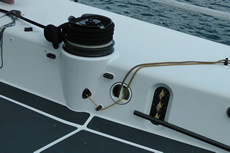 |
 |
 |
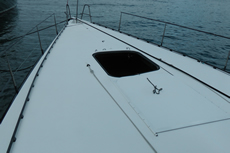 |
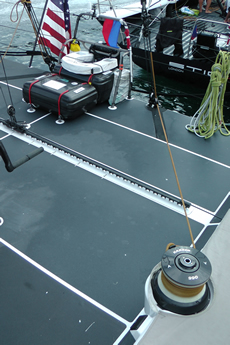 |
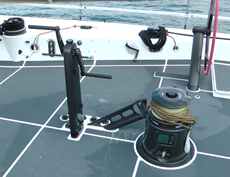 |
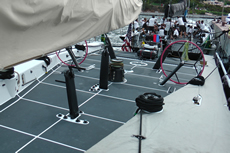 |

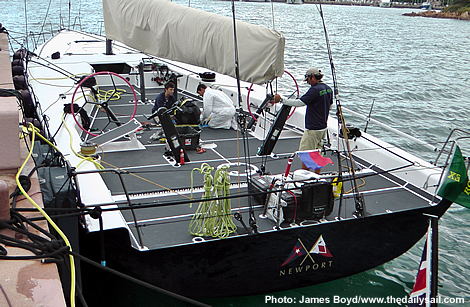
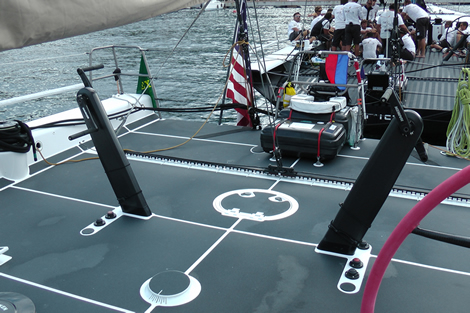
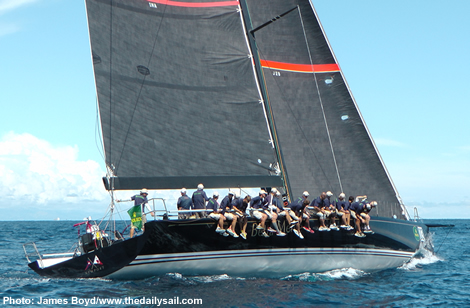










Latest Comments
Add a comment - Members log in